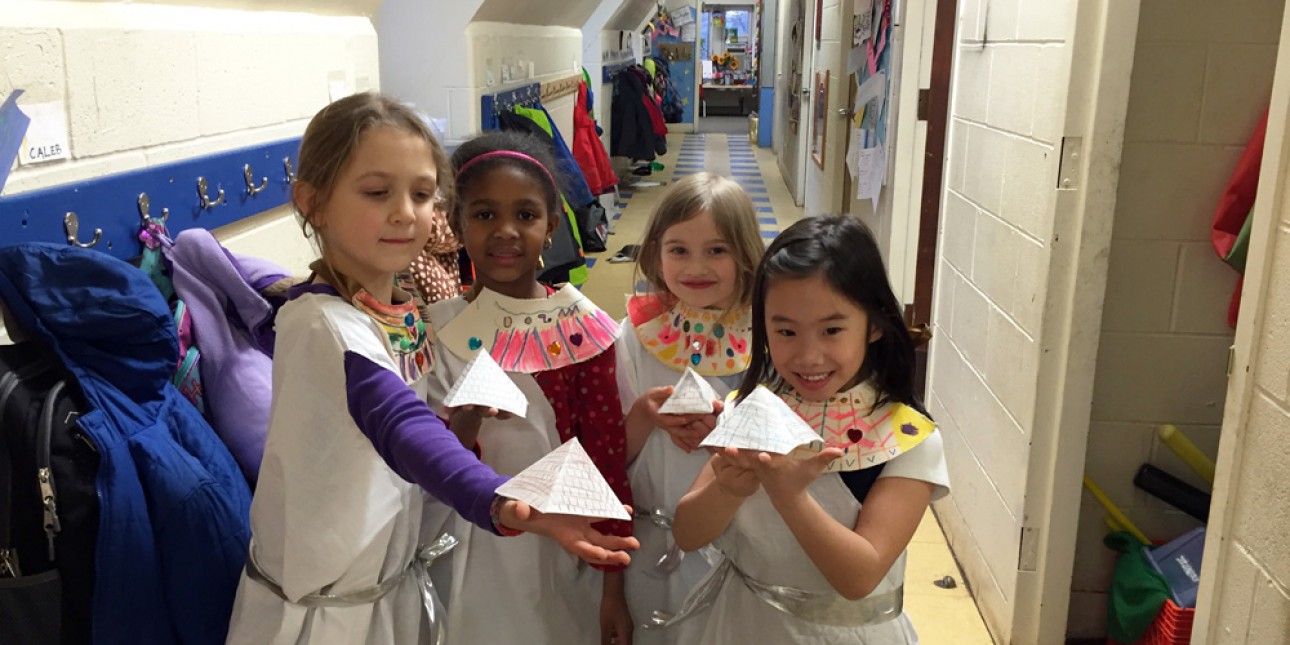In the Classroom: The Starlights

Varied and Unusual Clubs
A recent series of clubs gave the Startlights some interesting hands-on opportunities for learning.
During a club devoted to Egypt, we looked at timelines of interesting events and studied maps. We brainstormed a list of words pertaining to Egypt and talked about their meaning. We made mini pyramids and placed them in a large tray of desert sand complete with a sphinx to replicate the appropriate environment. We made a cartouche and filled it with the hieroglyphic alphabet of our names. The Starlights concluded the study of Egypt by making a fabulous fabric jeweled collar that would be worn by kings and queens.
Zentangle is an easy to learn, relaxing, and fun way to create beautiful images by drawing structured patterns. One of the keys to Zentangle art is to always take your time,go slowly ,and relax. The focus is on the present moment, never on the result; on the journey, not the destination. In this club we started by making a sample book of common patterns, such as crescent moon, bubbles, rain, and seaweed. As we progressed more and more patterns were added and the Starlights started to create their own designs to share with friends. We were careful to label and date our patterens in order to chart the development from simple to complex structured patterns.
The Animal Art club began by carefully looking at different animals and how famous artists portrayed them. We started with a realistic drawing of a horse by George Stubbs and used his model of simple geometric shapes to create our own lifelike picture. The Starlights then studied a Henry Moore sculpture of an owl. We used air-dry clay and different tools to create a rough texture of feathers on the clay. The birds started out simple but soon evolved to include nests, eggs, and baby birds. Our last Animal Art project was based on the prehistoric Lascaux Cave paintings. We mixed sand and acrylic paint to cover cardboard to make it look like the wall of a cave. Then we used a charcoal stick to sketch in the shape of our animal.
John Heinz National Wildlife Refuge lent the Starlights two mammal study kits. These kits contained Pennsylvania mammal pelts, skulls, rubber casts of scat, and foot prints. Using these tools we learned to identify the characteristics of common mammals found in and around Philadelphia such as white tailed deer, skunks, opossums, and squirrels. We used modeling clay to make impressions of animal tracks and made a hanging paper quilt of photographs of these mammals. The Starlights got the biggest laugh when they handled the scat molds (animal poop) and learned that biologists can determine what an animal ate by analyzing the contents. Our club plan for the future is to borrow a bird kit and dissect an owl pellet.
Classrooms